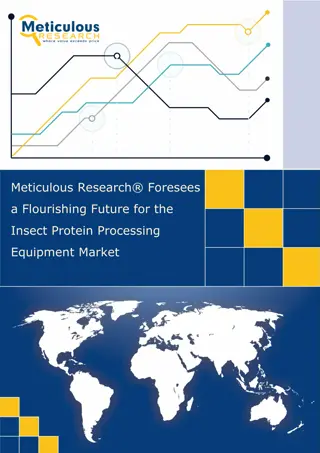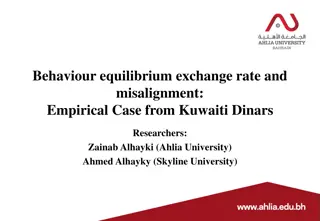Understanding the Insect Gas Exchange System
The insect gas exchange system involves spiracles, tracheae, and tracheoles that facilitate the exchange of gases to support respiration in insects. Spiracles lined with chitin control airflow, while tracheae and tracheoles enable oxygen to dissolve into the haemolymph through passive diffusion, supporting cellular respiration. In dry habitats, insects utilize collapsible air sacs to conserve water and regulate gas exchange. This intricate system allows insects to thrive in a variety of environments.
Download Presentation

Please find below an Image/Link to download the presentation.
The content on the website is provided AS IS for your information and personal use only. It may not be sold, licensed, or shared on other websites without obtaining consent from the author. Download presentation by click this link. If you encounter any issues during the download, it is possible that the publisher has removed the file from their server.
E N D
Presentation Transcript
An X-ray of the yellow mealworm beetle - revealing the system of white tubes or tracheae running through its body
The Insect Gas Exchange System An insect has spiracles (openings) lined with chitin on the sides of its body. The chitin give shape to the openings. The spiracles can open and close by small muscles. These muscles contract to shut flap like valves and relax to open the valves allows control of the flow of air as well as slow down the loss of water.
spiracles Zoom Zoom The spiracles open into a system of tubes called tracheae
Tracheal System Outside air spiracles (openings) Tracheae Tracheoles Trachea walls are reinforced with Taenidiae (thickening of the chitin) allows insects to flex and stretch without developing kinks that might restrict air flow.
Storage of Air adaptation for dry habitat Collapsible air sacs present in areas without taenidiae In dry terrestrial environments, this temporary air supply allows insects to conserve water by closing it spiracles during very dry periods use the stored air in the sacs.
Tracheoles Trachea lead to smaller tracheoles. The ends of each tracheole finishes in a group of body cells. The ends are lined with a thin moist surface (membranes) where the exchange of gases can take place. The thin membranes are surrounded by watery haemolymph. The body cells are bathed in the haemolymph.
Passive Diffusion of Gases Oxygen from the air in the tracheoles dissolves into the haemolymph fluid on the thin moist membrane surface and diffuses into the cells. O2 diffuse from tracheoles into haemolymph from a high concentration of O2 to a lower concentration of O2. O2 CO2 CO2 O2 O2 CO2 CO2 produced by cell respiration can diffuse from the cells into haemolymph into tracheoles from a high concentration of CO2 to a lower concentration of CO2. O2 O2 O2 tracheole Cells covered with haemolymph
Increased Surface Area for Gas Exchange Extensive network of trachea and tracheoles s surface area exposed for diffusion of: O2 into haemolymph and further to the body cells. CO2 out of cells into haemolymph into tracheoles.
Thin Surface for Gas Exchange Thin surface to endings of tracheoles s the barrier to diffusion of: O2 into haemolymph and further to the body cells. CO2 out of cells into the haemolymph into the tracheoles. Tracheole Cells Haemolymph Zoom
Moist Surface for Gas Exchange Moist surface at end of the tracheoles is important for: O2 to dissolve into the watery substance for diffusion into the haemolymph. CO2 to dissolve into the water substance for diffusion out of the haemolymph into the tracheoles
What Prevents Insects from being the Size we see in the Horror Movies? Insects rely upon passive diffusion and physical activity for the movement of gases within the tracheal system. Diffusion of O2 and CO2 through the air in the tracheal tubes is fast enough only for distances less than 1cm for the body surface. This limits the size/radius of the insect s body. Larger organisms use a blood circulatory system (blood vessels) to over come this limitation.























